
Farmers deliver value you can see.
From fire trucks to police, emergency services are funded through community dollars.
Ever think about how much an acre of soybeans pays for every fire truck? From property
taxes to the volunteers on the rural, small-town fire departments, farmers deliver
more value than you might see.

It’s time to see the value your farmers deliver.
Sure, rolling fields are bucolic and the sight of a calf frolicking in a pasture is charming, but agriculture is more than picturesque scenery. Providing your local community with important tax dollars, creating jobs, and investing dollars in research to improve roads, bridges, soil and water are just a few of the advantages to having agriculture in your backyard.
Creating jobs
It’s not all cows and crops. Trucking, processing, railways, waterways and supply chains are all directly tied to agriculture.
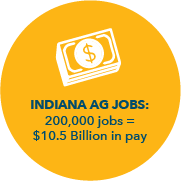

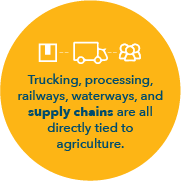
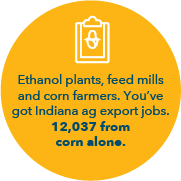
The expanding effect
One new poultry barn equals 441 new jobs. How? Corn is grown, processed, delivered, chick gets a new home, manure is made, moved, and applied to new corn field. Chick becomes
chicken, delivery driver delivers, dinner is made.
It’s a cycle with jobs at every stop.

Grown here, delivered there
Where? Anywhere. Corn and soybeans grown here head down rail, waterway and roads to overseas, bringing in an astonishing $890 million to the Indiana GDP.
More jobs? Yes. 12,037 from corn exports alone. Got an ethanol plant, a feed mill or a corn farmer? You’ve got Indiana ag export jobs.

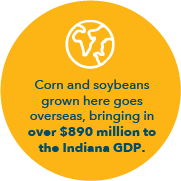
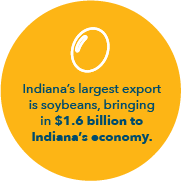
Investing without using
Big, sprawling open fields — beautiful and beneficial. For every dollar in tax revenue collected, ag leaves 70 cents on the table for other county uses. What do all those
dollars pay for?
Fire / emergency services
Public schools
County maintenance
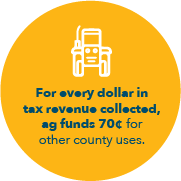
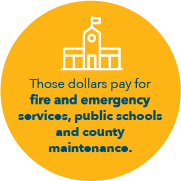
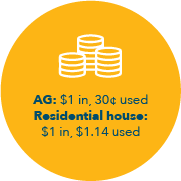

Feeding bigger revenues
The corn and soybeans grown down the road feeds livestock. Those livestock are valuable here at home, but they create a multiplier value-added effect for the corn and soybeans they feast on. Even dried distillers grains, the co-product of ethanol production end up in livestock feed, making it valuable twice over.
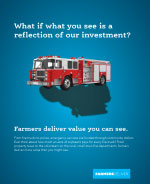
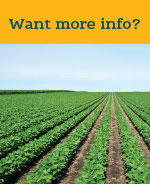
Sources
Deboer, L. 2010. “A Cost of Community Services Study For Indiana Counties and School Corporations.” Purdue University, Department of Agricultural Economics.
Exporting Corn through U.S. Beef and Pork. U.S. Meat Export Federation.
Exporting Soybeans through U.S. Pork. U.S. Meat Export Federation.
The Value of Indiana Agriculture. Indiana Corn & Soybean Checkoff Investment.


